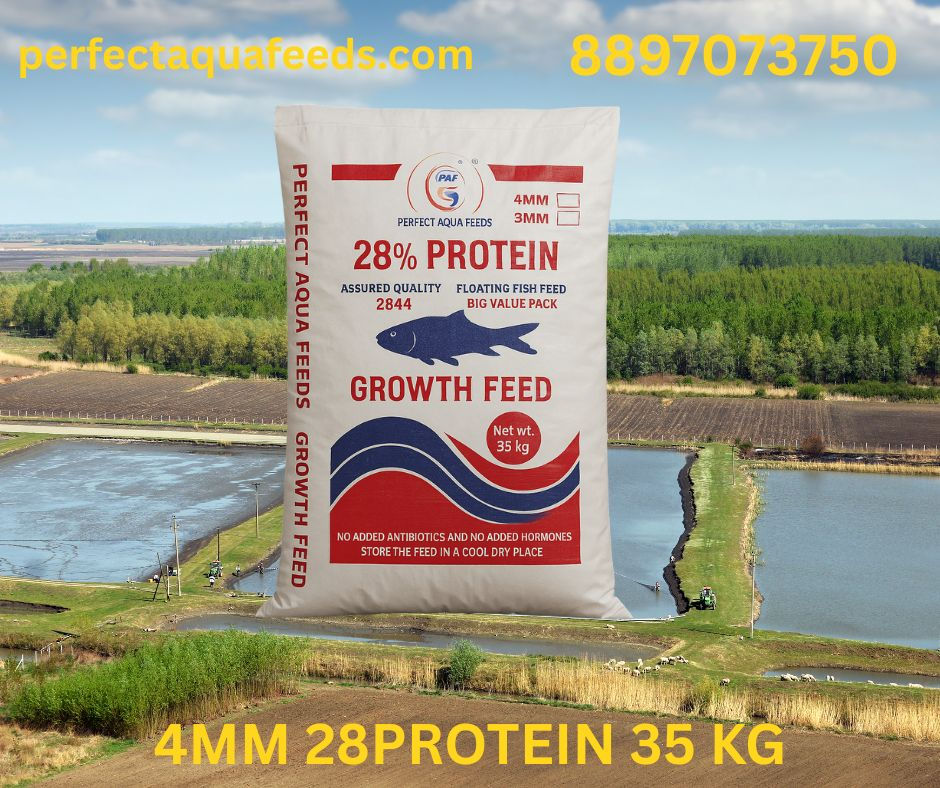Unlocking the Potential of Aquaculture: Most Profitable Fish to Farm in India with PerfectAqua Feeds
- contact017599
- Aug 1
- 3 min read

Aquaculture is rapidly transforming into a thriving industry in India. The nation's diverse climates and ample water resources create perfect circumstances for successful fish farming. With seafood demand soaring in both domestic and international markets, more farmers are exploring aquaculture as a profitable livelihood. In this post, we will delve into the most profitable fish species to farm in India, specifically enhanced by using PerfectAqua feeds.
Understanding Indian Aquaculture
India ranks as the second-largest fish producer globally, with the aquaculture sector expected to grow considerably over the next few years. The industry not only employs millions but also plays a pivotal role in ensuring food security. The rise in urbanization and increasing income levels drive higher demand for quality fish protein.
However, this growth presents challenges, including disease outbreaks, water pollution, and uncertain market prices. High-quality feeds like PerfectAqua can effectively address these issues, improving both production efficiency and profitability for farmers.
The Top Fish Species for Aquaculture in India
1. Rohu (Labeo rohita)
Rohu is a highly sought-after freshwater fish in India, known for its delicious taste and relatively rapid growth. Farmers can achieve significant profits with Rohu within just six months. This species adapts well to various conditions and is less susceptible to diseases, reducing management difficulties. Using PerfectAqua feeds can boost growth rates by as much as 20%, allowing farmers to reach optimal harvest sizes more quickly.
2. Catla (Catla catla)
Catla is another top choice in India’s aquaculture landscape. With its rapid growth—up to 2 kg within a year—and high market value, Catla farming stands out as a lucrative option. Beyond meeting local needs, farming Catla opens doors to export opportunities. By incorporating PerfectAqua feeds into their diet, fish farmers can expect a growth rate increase of around 25%, enhancing feed conversion efficiency and profitability.
3. Tilapia (Oreochromis niloticus)
Tilapia is a resilient fish thriving in a range of environments, making it a favorite among Indian aquafarmers. Not only does it have a mild taste, but it also provides health benefits, appealing to health-conscious consumers. Using PerfectAqua feeds can lead to improved survival rates, with farmers reporting increases of up to 90% in fish health and yields. This translates into substantial profits within a year of farming.
4. Prawn (Penaeus monodon)
Prawn farming is gaining prominence, significantly contributing to local kitchens and export markets. The black tiger shrimp, or Penaeus monodon, is especially valued for its size and taste. Farmers utilizing PerfectAqua shrimp feeds can optimize growth, often achieving sizes of 20% larger than competitors not using specialized feeds. The ability to maintain high-density culture systems enables farmers to maximize profits while minimizing risks.
5. Mrigal Carp (Cirrhina mrigala)
Mrigal carp, a native to India, plays an essential role in aquaculture. It flourishes in varying aquatic ecosystems and fits well into mixed farming systems. To enhance growth and disease resistance, feeding mrigal carp PerfectAqua feeds is key. This species often yields an increase of around 15% in overall productivity when integrated into polyculture systems, benefiting all fish types involved.
Integrating PerfectAqua Feeds for Success
Selecting appropriate feed can dramatically impact the success of aquaculture initiatives. PerfectAqua feeds cater to the nutritional needs of different fish species, offering a range of benefits:
Nutritional Balance: PerfectAqua contains the right proportions of proteins, fats, vitamins, and minerals for fish health.
Enhanced Growth Rates: Fish fed with optimal nutrition grow faster, reaching market size sooner.
Improved Feed Conversion Ratio: A higher feed conversion ratio can lead to increased profits. Farmers have reported improvements by up to 35% in this area.
Health Benefits: Stronger, healthier fish lower the risk of disease, reducing losses and enhancing overall yields.
Sustainable Practices for Fish Farming
Profitability is essential, but sustainable practices must remain a priority for fish farmers. Poor aquaculture methods can have long-lasting effects on the environment. By adopting eco-friendly practices, farmers can protect the ecosystem and ensure long-term success in aquaculture.
To enhance sustainability, farmers should consider:
Regular monitoring of water quality to maintain a healthy growing environment.
Practicing polyculture to grow multiple compatible species together, boosting productivity.
Efficient waste management to reduce feed spoilage and minimize environmental impact.
The Future of Aquaculture in India
Aquaculture in India offers remarkable potential, showcasing various profitable fish species suitable for farming. By leveraging high-quality feeds like PerfectAqua, fish farmers can maximize yields while focusing on sustainable practices. Ensuring that farming grows responsibly helps secure the future of this vital industry.
As more individuals recognize the possibilities in aquaculture, making informed choices paired with superior feeds can unlock a prosperous future. The combination of profitable species and effective feeding strategies can elevate the industry, benefiting both producers and consumers alike.
In a world facing economic challenges, the aquaculture sector presents hope and growth, inviting ambitious individuals eager to seize the opportunity.
.png)

Comments